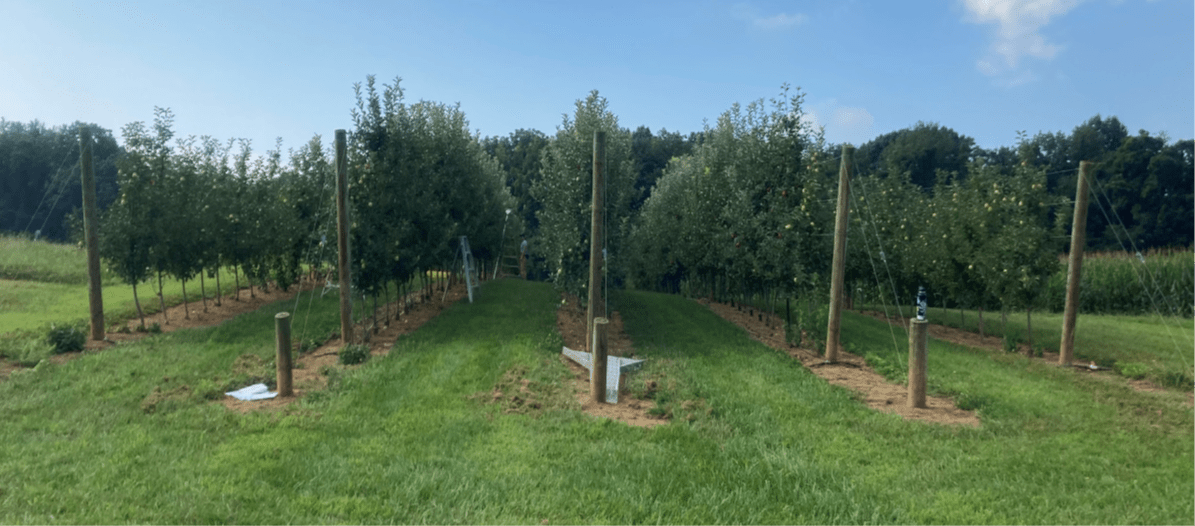Rootstock Effect on 'Buckeye Gala' Tree Performance, Maturity, and Fruit Quality
Macarena Farcuh (PI)
This study was conducted in an NC-140 replicated trial that was planted in Spring 2019 and consists of ‘Buckeye Gala’ grafted on 10 different rootstocks. During the first growing season trees were set, trellises were built, and trees were trained to the tall spindle system as specified in the protocol. To date, we have almost 100% tree survival in this planting (except for one Gala tree grafted on G.935 rootstock).
We were interested in understanding the effects of rootstocks on tree performance and on Gala apple fruit maturity and quality at harvest. For achieving this we evaluated different parameters including tree performance measurements (tree size (TCA), yield and crop load), fruit internal ethylene production (IEC), and fruit physicochemical measurements such as fruit weight, skin and flesh color, index of absorbance difference (IAD), red blush percentage, flesh firmness, starch pattern index (SPI), SSC and titratable acidity (TA), on Gala fruit grafted on ten rootstocks at harvest.
From our results we were able to see that ‘Buckeye Gala’ scion grafted in a diverse panel of ten rootstock genotypes under Western Maryland environmental conditions showed that there was a trend for delayed fruit maturity, lower fruit weight and higher yield with increasingly vigorous rootstocks. This was demonstrated by the degree of associations of the different assessed parameters with the different evaluated rootstocks. We observed that Gala grafted on G.11 displayed the closest association with IEC, SPI, skin blush and weight, followed by fruit on M.9T337 and G.41that located close to the same parameters as G.11. Next, fruit grafted on NZ.2 displayed a lower association with IEC, SPI, and skin blush. Fruit grafted on B.10 showed a closer association with the parameters of fruit weight and SSC. Gala grafted on NZ.1 and G.814 associated with TCA, firmness, and skin hue angle, while fruit grafted on G.935 had a closer association to the parameters of flesh hue angle, IAD, TA and yield, as well as to TCA, firmness, and skin hue angle. Finally, fruit grafted on G.969 and M.26 presented the closest association with the parameters of skin and flesh hue angles, TCA, firmness, as well as to yield, IAD and TA, and the lowest association to the parameters of IEC, SPI, skin blush and weight.
From our study, we can conclude that rootstock impact must be considered when making management decisions in ‘Buckeye Gala’ fruit grown under Western Maryland conditions as they are critical in modulating fruit maturity and quality.
